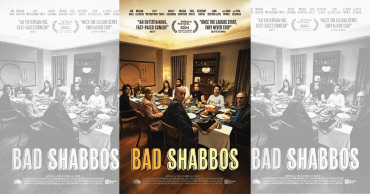My Sit Down With The Atlantic’s Emma Green on the Portrayal of Orthodox Jews in the Media
I recently sat down with Emma Green, staff writer at The Atlantic where she covers politics, policy, and religion. Religion is one of her areas of expertise. I asked Green for her thoughts on how Orthodox Jews are depicted in traditional media. She admitted that there can be a lack of nuance. “In general, certain religious minorities in the U.S. tend to get more coverage compared to other religious minorities.” Green explained that religiously Americans identify predominantly as Christian (up to 70%). Only 2% of the U.S. population identifies as Jewish. “Muslims and Jews tend to get a lot of coverage compared to that small percentage.” With coverage of Orthodox Jews, Green explained that, “a lot of fascination can be at work.” The secular backgrounds of most reporters are a contributing factor. These reporters may have some sort of Jewish background. Many will look at the observant as a curiosity at best, and usually, as much worse.
Green lamented, “People are complicated and weird and there are people that are complicated and weird from every kind of background. Bringing that kind of texture in news coverage is really important.” With all communities that tend to be close-knit, Green explained that cultures which are more seclusive can have a side effect of not having “an ambassador to share the stories outside of the community. Mormons and evangelical Christians fall into this category as well as Orthodox Jews.” This is a downside to not having more Orthodox voices in traditonal media, and in addition, a fear of the media that permeates certain Orthodox circles.
However, there are Jewish writers that are more nuanced and sympathetic to Hasidic, Yeshivish and Modern Orthodox voices. “There’s a wonderful tradition of Jewish media outlets like the Forward and the Jerusalem Post,” Green noted. Even these sites can depict stereotypes instead of the authentic Orthodox experience. “All of these different groups have ways of discussing the Orthodox community…some people are bringing biases to those experiences…perhaps they feel insecure or religiously illiterate.” The better depictions come when the reporter’s curiosity results in a piece filled with a picture that defies the myths. “How wonderful it is when you get to be a reporter to find out how deep the rabbit hole goes.” Because of her awareness of the Orthodox Jewish experience in the media, Green herself has discovered much more about the other religions she has covered, with an open eye to their intricacies. “The more that I find out…the more I realize how complex every different religion is.”
When Orthodox Jews read headlines that cast them in a bad light consistently, they might develop a mistrust of the mainstream media. Green acknowledged, “You don’t think they are going to give you a fair shake in representing you.” Green suggested that the best way to inculcate against that mistrust is to “Talk to reporters. Be unafraid of people who work in the media. Not everyone who works in the media…wants to draw nuanced portraits…but most of them try to do a good job and to understand.” Green suggested that traditional reporters have a difficult task ahead of them. “The learning curve is very steep when it comes to Orthodox Judaism…[the] language differences [alone] would have a reporter spinning.”
I explained to Green that we have made several connections with reporters over the years but, often times it’s the editor who prevents a positive story from happening or brings in a negative slant. I was curious how she suggested one breaks through to editors. Green said editors should see the value of telling more accurate stories that depict Orthodox Judaism. “It is beneficial for newsrooms to not only have people who are religiously literate but who recognize that religion stories are stories that people want to hear. They are interesting, important and compelling, and that ultimately there is value in telling the story.” Green herself acknowledged that she can take a page from that as well. “The good version of reporting is trying to figure out all of those differences, and tell people’s stories as people and not just as characters, not just as Jews but as people who are Jewish, and people who have a variety of identities and experiences and thoughts…Within the news media, we should do a better job of appreciating where we can tell those stories and the value that those will have for our readers.”
If you found this content meaningful and want to help further our mission through our Keter, Makom, and Tikun branches, please consider becoming a Change Maker today.







